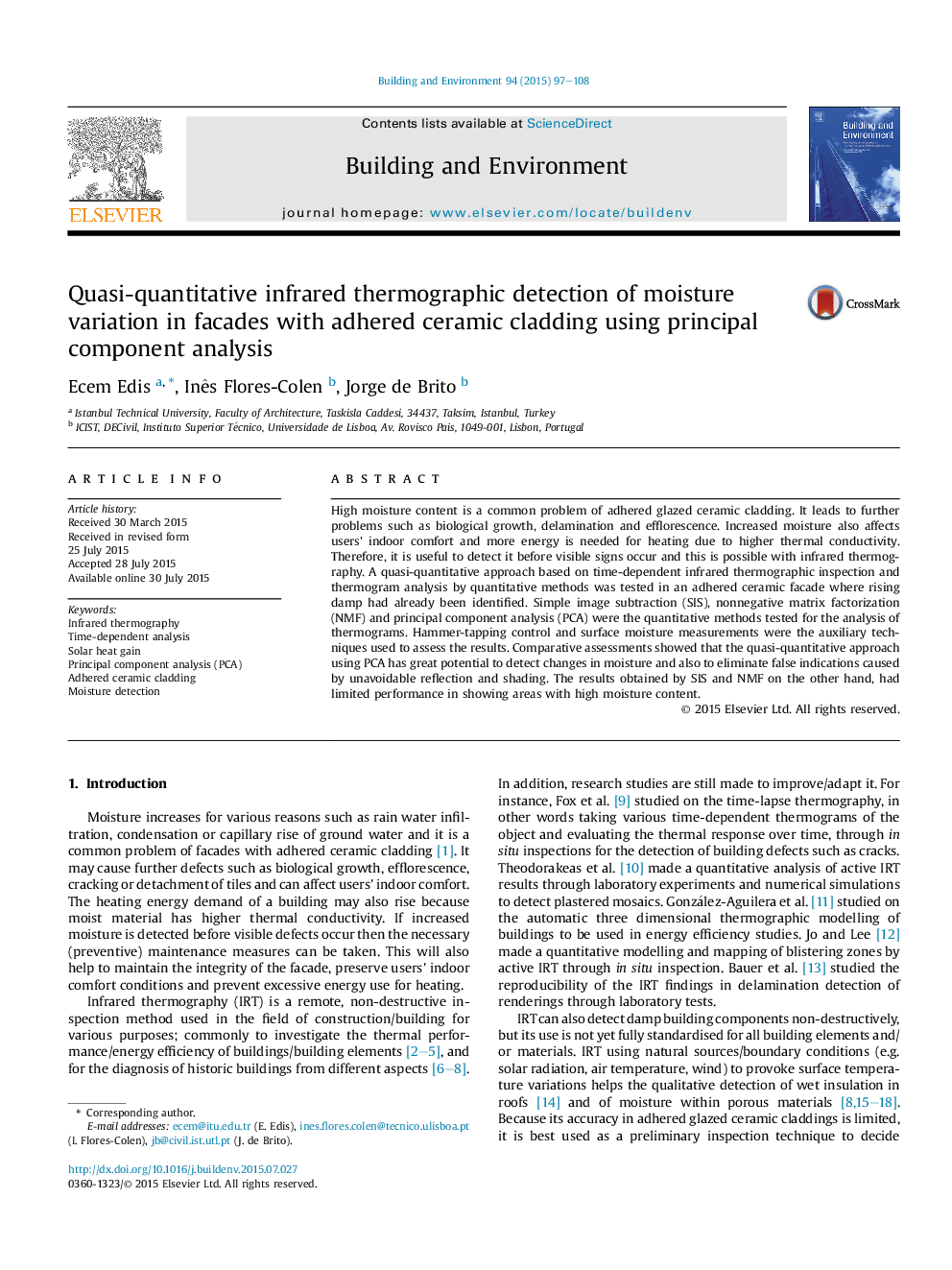| Article ID | Journal | Published Year | Pages | File Type |
|---|---|---|---|---|
| 247798 | Building and Environment | 2015 | 12 Pages |
•High moisture content is a common problem in adhered ceramic claddings.•To detect moisture, a facade was inspected by time-dependent thermography (IRT).•Surface moisture content (SMC) was measured to validate IRT findings.•Principal component analysis (PCA) was used to enhance and analyse IRT data.•Areas with increased SMC were adequately identified by time-depent IRT using PCA.
High moisture content is a common problem of adhered glazed ceramic cladding. It leads to further problems such as biological growth, delamination and efflorescence. Increased moisture also affects users' indoor comfort and more energy is needed for heating due to higher thermal conductivity. Therefore, it is useful to detect it before visible signs occur and this is possible with infrared thermography. A quasi-quantitative approach based on time-dependent infrared thermographic inspection and thermogram analysis by quantitative methods was tested in an adhered ceramic facade where rising damp had already been identified. Simple image subtraction (SIS), nonnegative matrix factorization (NMF) and principal component analysis (PCA) were the quantitative methods tested for the analysis of thermograms. Hammer-tapping control and surface moisture measurements were the auxiliary techniques used to assess the results. Comparative assessments showed that the quasi-quantitative approach using PCA has great potential to detect changes in moisture and also to eliminate false indications caused by unavoidable reflection and shading. The results obtained by SIS and NMF on the other hand, had limited performance in showing areas with high moisture content.
